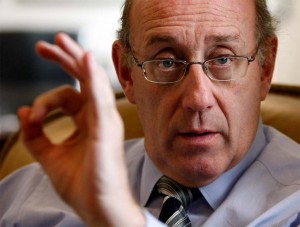There will be no limit to the amount of money available for a new victims’ compensation program set up to cover those injured or killed due to crashes caused by the faulty ignition switches in General Motors vehicles, announced Kenneth Feinberg, the new program’s administrator.
The program, to be funded by GM, will begin taking claims from victims or their families on August 1st, has been designed to deliver “prompt” payment for those considered eligible, said Feinberg during a news conference in Washington, D.C. He noted that the voluntary program will not provide for punitive damages but could still deliver compensation running up to $7 million or beyond based on a series of hypothetical situations Feinberg outlined.
Significantly, the program will be open even to those who had previously settled a lawsuit with GM due to an ignition switch crash. And, Feinberg noted, “Any contributing negligence of the driver, intoxications, speeding, texting, will be irrelevant under this program. This is about GM and ignition switches…not anything about the driver.”
The announcement of the compensation fund is the latest development in connection with a recall GM first announced in mid-February, eventually covering 2.6 million vehicles. The maker acknowledged that at least some company insiders knew there were problems with ignition switches that could inadvertently turn from the On to Accessory or Off position, causing the vehicles to shut off while disabling their power steering and brakes, as well as their airbags.
(Faulty Takata airbags force yet another GM recall. Click Here for the story.)
The maker has listed 13 deaths linked to the problem, while acknowledging there could be more. Various reports have placed the figure at anywhere from 70 to more than 100, and during Feinberg’s Monday morning news conference, the mother of one woman killed in an ignition switch crash offered to prevent the compensation czar with evidence putting the figure closer to 165.
The program was developed with the approval of General Motors, noted Feinberg, a lawyer generally considered the nation’s leading expert in victims’ compensation, having handled funds for, among others, 9/11 victims and those injured by the BP oil spill in the Gulf of Mexico.
In an hour-long news conference, Feinberg offered praise for GM, noting, “I must say (CEO) Mary Barra and her colleagues at General Motors have been absolutely 100% cooperative.” Perhaps more significantly, Feinberg stressed that the protocol, or rules set up for the program, “gives us sole final authority to make a decision” on who gets what compensation. “GM cannot refuse…the decisions we make.”
The program has three categories of victims:
- Those killed in a crash caused by the ignition switch defect;
- Those “catastrophically injured,” such as paraplegics, quadriplegics, those who lost multiple limbs or suffered severe and extensive burns;
- Those whose injuries may have required more minor treatment, both in hospital or on an out-patient basis.
Those claiming to qualify will need to provide eligibility, and the website that the fund plans to set up will outline a variety of possible means of proving that injuries were the result of an ignition switch-related crash. But Feinberg also said he expects to receive a significant number of claims from those who own not only GM vehicles not covered by the program, but even those who were injured in crashes involving other manufacturers’ products.
“Build it, they will come,” he predicted.
The goal is to provide payment to victims or their families within 90 days on “simple,” and clear-cut cases, 180 days if more research is needed. Feinberg said he would personally meet with anyone wishing to discuss a case, or their lawyers, and the fund’s administrators would assist anyone who might need help proving their eligibility.
(U.S. auto industry nears record number of recalls — and it’s only mid-year. Click Here to find out why.)
The GM program is roughly based on the protocol Feinberg’s team established for the 9/11 fund, though the guidelines for payment have been increased. In the event of someone needed outpatient treatment, the payout could run as high as $20,000. For a 10-year-old who was left a quadriplegic, the guidelines would yield a $7.8 million payout.
Feinberg stressed that there will be no punitive damages included in the voluntary program. Those who want to “punish” GM, he suggested, might consider the alternatives and bring a lawsuit on their own.
The fund also will not cover claims of lost value to used vehicles covered by the recall. A Seattle law firm this month filed a class action against GM seeking as much as $10 billion due to, among other things, lower trade-in values. However, an investigation by TheDetroitbureau.com has so far indicated no shift in residual values due to the recall.
GM is clearly hoping that the victims’ compensation program will help it put the ignition switch recall behind, but the maker still faces a series of investigations, including one by the U.S. Justice Department that could lead to criminal charges and large fines.
(No more firings for botched ignition switch recall, says CEO Barra. Click Here for the latest.)
Meanwhile, the automaker has been rapidly addressing other safety issues and, since January, has now recalled more than 18 million vehicles sold in the U.S. alone.

